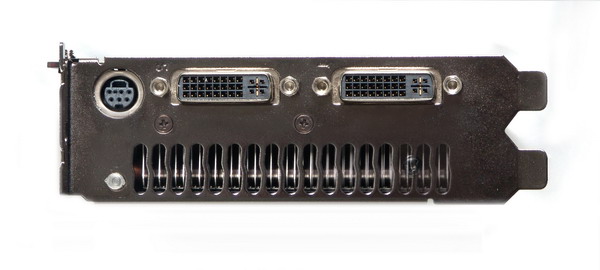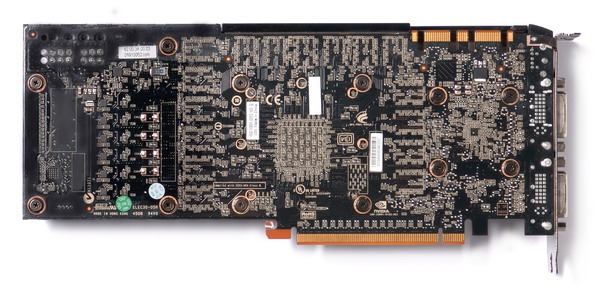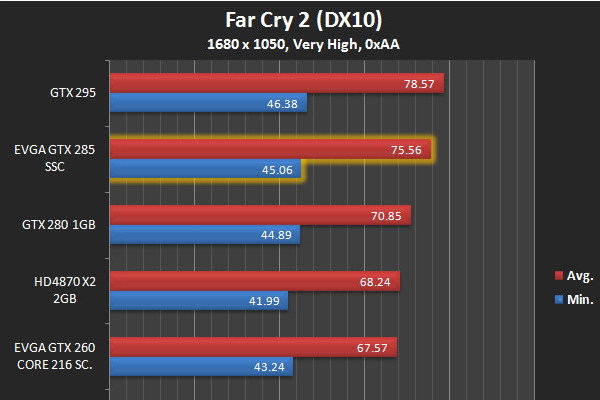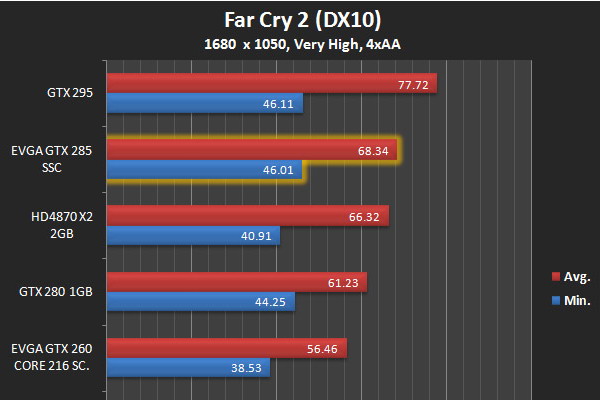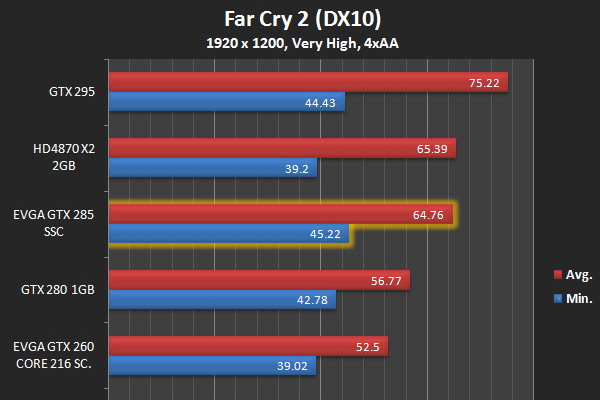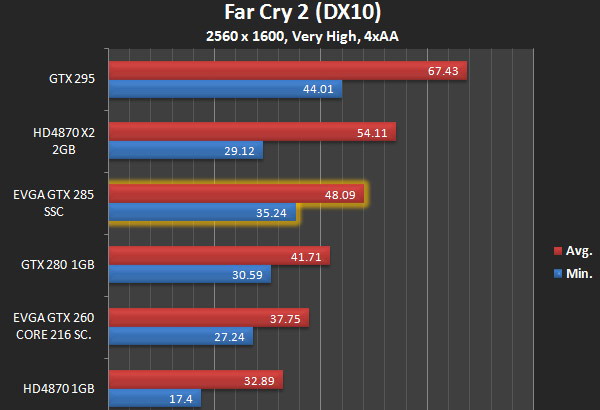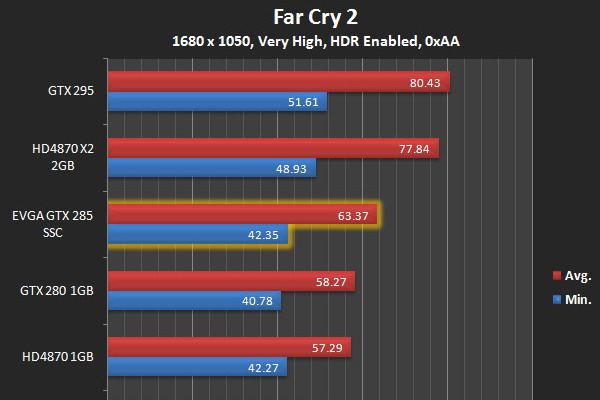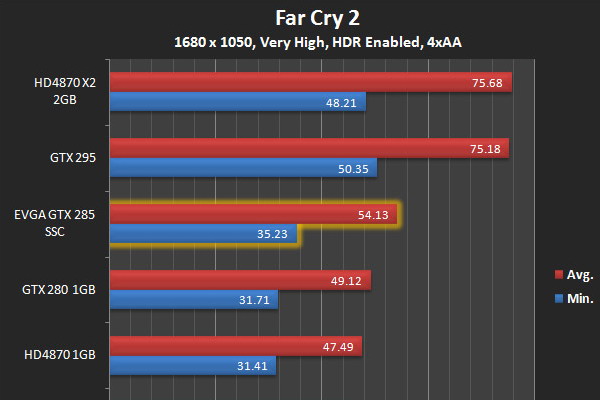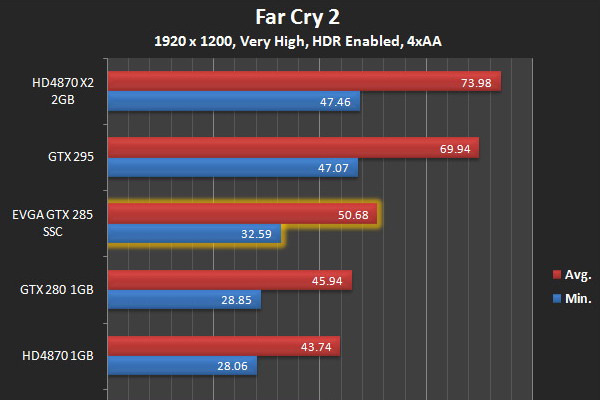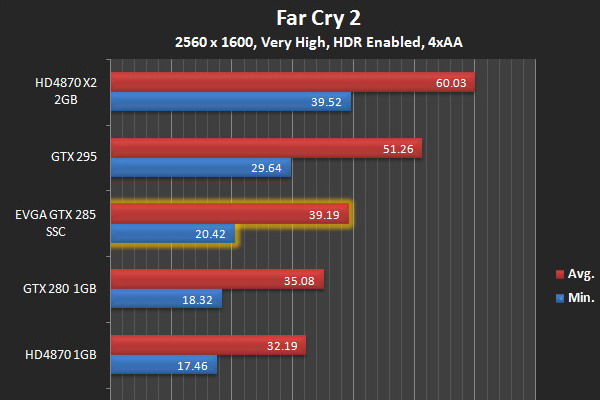
ZOTAC GeForce GTX 285 1GB AMP
Hardware 0 CommentsIntroduction
In the midst of all the rebranding and fine-tuning, NVIDIA managed to make again, the most powerful single-GPU video card. Well, they also made the most powerful dual-GPU video card but that’s not what I’m reviewing, is it.
I’m reviewing the GTX 285, the die-shrunk, power-boosted bastard of the GTX 280. It’s really, really powerful. There has to be some kind of flaw, right? In some ways, it’s overpriced, but is that even fair? It’s maybe a bit expensive, but only compared to other video cards–for less than $400, I’m sure everyone at NVIDIA thinks they’re just giving these away.
Which is sad for them, great for everyone else. This is an exemplary performer on its own, and costs $200 less than the GTX 280 back when it came out. Did I mention how frustratingly powerful it is?
ZOTAC, always at the ready with their factory-overclocked parts, sent me a pure example of their top-shelf video card.
The Card & Bundle
Unless you’re crazy for PCB layout there’s no way to know that this GTX 285 was really different than, say, a 9800 GTX, I mean, a GTS 250, sorry. Gone is the heatspreader off the back, so this hardware is distinctly different compared to its progenitor, the GTX 280.
Also, the card only uses two six-pin Molex auxiliary power connections, not the six+eight-pin power configuration. While this may seem like an indication of lower power consumption, combined, those still deliver 150W over the minimum 75W of a PCI-Express slot, so it’s very possible that this is still very hungry hardware.
The bundled software includes a copy of the well-received racing game, GRID, as well as a copy of 3DMark Vantage, and the driver CD. Accessories are two power adapters, an HDMI adapter, an audio cable for said HDMI, and a VGA adapter. Plus, there’s a paper manual and paper warranty.
Specifications and Setup
In this review, we’ll be comparing the Zotac GTX 285 Amp to:
- a Diamond Radeon HD 4870 1GB
- a VisionTek Radeon HD 4870 X2 2GB
- an EVGA GeForce GTX 260 896MB FTW
- and a ZOTAC GeForce GTX 280 1GB Amp
Test Computer Specifications
- Intel Core 2 Duo E8400 3GHz
- Asus Rampage Formula (Sponsored by Asus)
- Crucial Ballistix Tracer DDR2 800 @ 4-4-4-12 (Sponsored by Crucial)
- Thermaltake Toughpower 1000 (Sponsored by Thermaltake)
- Windows Vista Ultimate x64 (Sponsored by Microsoft)
Video Card Specifications
Supercharge your cinematic gaming experience with the ZOTAC GeForce GTX 285 AMP! Edition. Take extreme high-definition gaming and the latest DirectX 10, OpenGL 2.1 and PhysX enabled games and applications to uncharted levels of performance with the tweaked and tuned ZOTAC GeForce GTX 285 AMP! Edition.
The ZOTAC GeForce GTX 285 AMP! Edition doesn’t just churn out phenomenal visuals and performance shattering frame rates. Graphics Plus technology enables the ZOTAC GeForce GTX 285 AMP! Edition to deliver immersive gaming experiences with NVIDIA PhysX and Stereoscopic 3D technologies for an experience that leaves you questioning if it’s simply a game or reality.
Chipset
- Chipset Manufacturer NVIDIA®
- GPU GeForce® GTX 285
- Core clock 702MHz
- Stream Processors 240
- Shader Clock 1512 MHz
Memory
- Memory Clock 2592MHz
- Memory Size 1GB
- Memory Interface 512-bit
- Memory Type GDDR3
3D API
- DirectX DirectX 10
- OpenGL OpenGL 2.1
Ports
- DVI 2
- TV-Out HDTV / S-Video / Composite Out
- VIVO No
General
- Tuner None
- RAMDAC 400 MHz
- Max Resolution 2560 x 1600
- RoHS Compliant Yes
- SLI Supported Yes(3-way)
- Cooler With Fan
- Dual-Link DVI Supported Yes
- Windows Vista Certified for Windows Vista
Weight & Dimensions
- Weight 2 lbs
- Dimensions 13.26“ X 10.23“ X 2.67“
Packaging
- Driver Disk
- User Manual
- HDTV Cable
- 2 x Power Cable
- 2 x DVI to VGA/D-sub Adapter
- S-Video to Composite Adapter
- Race Driver: Grid
DirectX 10 Titles
Performance Notes
With DX10 in mind, this card’s performance isn’t really matched, not at these resolutions and these settings. It either beats or matches an HD 4870 X2. Again, at these resolutions–it doesn’t scale up quite as well.
DX9, OpenGL, and Synthetics
Performance Notes
There will probably never be a DX9 or OpenGL game that this card can’t handle. Well, maybe if OpenGL gets a revamp.
Here, things become even more disparate, though, with this GPU setting new highs across most of the board. It’s almost overkill.
Video, Power, and Overclocking
Like any true 200-series GTX, the video playback is a little bit oversaturated, but you can fix that in the control panel. The playback quality is otherwise perfect.
The fact that this card uses slightly less power than a GTX 285 was foreshadowed. The heatsink is lighter, the power connectors are lesser, and it just doesn’t get scorching hot. That said, this isn’t some lightweight. It actually consumes more power at idle (not by much) and less at load (not by much). It still breaks 200W at full tilt and comes pretty close to its ceiling at 225W–could be an overclocking limit for some.
The cooling isn’t the problem anymore, either. The GTX 280 was loud unless it was in full idle, with the slightest shift causing things to bump up fast. This card’s audible, but mostly because of the pitch of the fan, which isn’t pleasant but not very forceful. It too, idles silently.
On top of the factory overclock, I got about ten percent more overall speed out of this already dominant card. Like they say, nice.
Conclusion
This card is almost-but-not-quite a single-GPU silver bullet. I mean, it’s super-fast, with all the trappings of fast. It costs a lot, it uses a pile of power, but could very well be worth it.
Looking back at NVIDIA’s most recent crowning moment, the 8800 GTX, this card has a similar kind of ability to cast a very long shadow. But where the 8800 heralded DX10, the GTX 285 seems to be clutching on to it. DirectX 11 is probably less than a year away, and this hardware doesn’t have even the moderate advantage of DX10.1. I’m picturing a GTX 300 that’s this very card plus DX11 in an equally short amount of time.
While the current price isn’t the financial kidney-punch that was the GTX 280 (in that light, it’s practically reasonable) it’s nowhere near the bargain that a GTX 260-216 is, and like ATI’s high-end hardware, it also faces internal competition of SLIed lesser GTXs.
This is simply a very powerful, comparatively expensive video card. Simple is the important thing, here, and for many people, simple is best. But I always recommend buying cheap and upgrading often. If this isn’t cheap for you, it’s probably not a great idea. And, like I said, I don’t think there’s a huge amount of staying power, either.
But if it’s really not expensive for you, get these in pairs and drive your insanely large monitor without fear of dropped frames or jaggies, because this is the most powerful muti-GPU platform out there. (As always: for now.).

